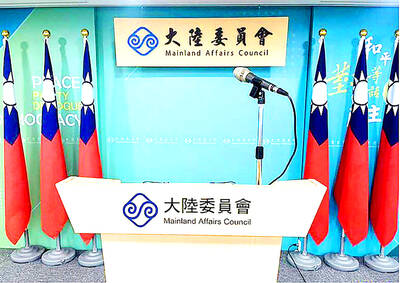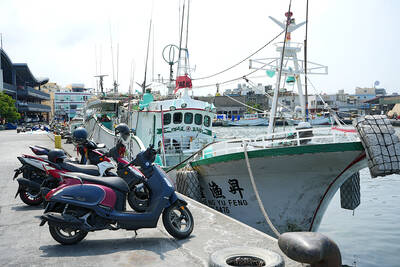In light of numerous typhoon disasters in recent years, the Ministry of the Interior has drafted a coastline law in an effort to better care for land restoration and conservation.
The draft proposes having the nation’s coastline divided into “preserved areas” and “protected areas,” and that a special unit should be set up to screen coastal developments from a preservationist point of view.
According to an official with the ministry’s Construction and Planning Agency, the spirit of the draft law is to set up a special governmental unit that could preview every coastal -development project with the goal of -preserving coastal geology.
The drafted coastline law would require central authorities to compile basic databases for coastal areas to facilitate research and coastal management, the official said.
Under the proposed law, the nation’s coastal areas would be divided into first and secondary level protected areas.
The first level would prohibit change to the shoreline or restrict uses to those that would keep it in its natural state, said the official, unless approval for other uses is granted by the central authorities.
Secondary level status would designate areas as “buffer zones,” where violations that cause a -natural disaster to occur because of alterations to the natural environment would be punishable with fines of up to NT$600,000 and up to 10 years in prison.
Meanwhile, the draft proposes that areas suffering from erosion, saltwater encroachment and land subsidence be categorized as national geological revitalization areas, requiring them to have a protection plan. The entire coastal management plan, preservation plan and protection plan would be reviewed every five years, the official said.
As it is currently written, the draft act would empower local governments to remove any buildings or land modifications that are obstacles to the implementation of the law. It also proposes granting the Council of Agriculture the power to abolish fishing rights, as well as empowering the Ministry of Economic Affairs to halt all mining and quarrying activities in coastal areas.
However, Lin Tsung-yi (林宗儀), an assistant professor at National Taiwan Normal University, has doubts about the effectiveness of the act, should it be passed.
While the shoreline is public property, there is also private property where hotels are built, such as in Kenting (墾丁), he said.
“It’s like they own the whole beach,” he said. “In such cases, how would the government intercede and manage the coast?”
Some officials also doubt that the proposed bill would make it through the legislature, noting that since its initial draft in the 1990s, it has not won the support of the lawmakers.
Conflict of interest and the noncommittal attitudes of the legislators means the draft only has a slim chance of being put up for review, an official said.

ENTERTAINERS IN CHINA: Taiwanese generally back the government being firm on infiltration and ‘united front’ work,’ the Asia-Pacific Elite Interchange Association said Most people support the government probing Taiwanese entertainers for allegedly “amplifying” the Chinese Communist Party’s propaganda, a survey conducted by the Asia-Pacific Elite Interchange Association showed on Friday. Public support stood at 56.4 percent for action by the Mainland Affairs Council and the Ministry of Culture to enhance scrutiny on Taiwanese performers and artists who have developed careers in China while allegedly adhering to the narrative of Beijing’s propaganda that denigrates or harms Taiwanese sovereignty, the poll showed. Thirty-three percent did not support the action, it showed. The poll showed that 51.5 percent of respondents supported the government’s investigation into Taiwanese who have

South Korean K-pop girl group Blackpink are to make Kaohsiung the first stop on their Asia tour when they perform at Kaohsiung National Stadium on Oct. 18 and 19, the event organizer said yesterday. The upcoming performances will also make Blackpink the first girl group ever to perform twice at the stadium. It will be the group’s third visit to Taiwan to stage a concert. The last time Blackpink held a concert in the city was in March 2023. Their first concert in Taiwan was on March 3, 2019, at NTSU Arena (Linkou Arena). The group’s 2022-2023 “Born Pink” tour set a

A Philippine official has denied allegations of mistreatment of crew members during Philippine authorities’ boarding of a Taiwanese fishing vessel on Monday. Philippine Bureau of Fisheries and Aquatic Resources (BFAR) spokesman Nazario Briguera on Friday said that BFAR law enforcement officers “observed the proper boarding protocols” when they boarded the Taiwanese vessel Sheng Yu Feng (昇漁豐號) and towed it to Basco Port in the Philippines. Briguera’s comments came a day after the Taiwanese captain of the Sheng Yu Feng, Chen Tsung-tun (陳宗頓), held a news conference in Pingtung County and accused the Philippine authorities of mistreatment during the boarding of

88.2 PERCENT INCREASE: The variants driving the current outbreak are not causing more severe symptoms, but are ‘more contagious’ than previous variants, an expert said Number of COVID-19 cases in the nation is surging, with the Centers for Disease Control (CDC) describing the ongoing wave of infections as “rapid and intense,” and projecting that the outbreak would continue through the end of July. A total of 19,097 outpatient and emergency visits related to COVID-19 were reported from May 11 to Saturday last week, an 88.2 percent increase from the previous week’s 10,149 visits, CDC data showed. The nearly 90 percent surge in case numbers also marks the sixth consecutive weekly increase, although the total remains below the 23,778 recorded during the same period last year,